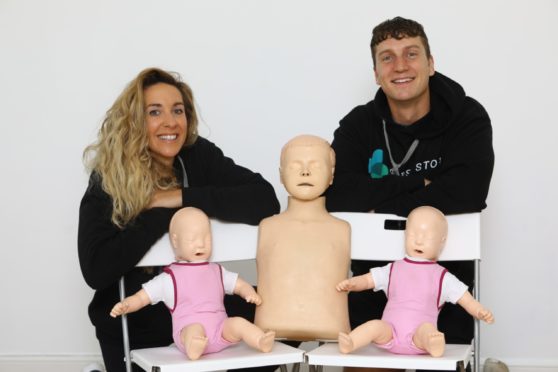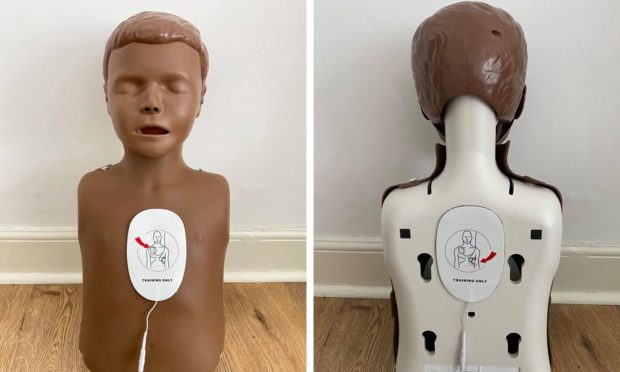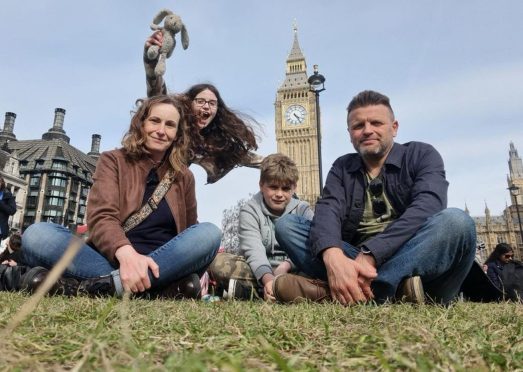Dundee’s first aid experts Sean and Robyn Duffy hope to help families gain confidence in using a defibrillator on young children in an emergency.
The husband and wife duo, who run First Stop Safety Training, offer a number of first aid courses for families, children and work colleagues to learn how to support people who are in cardiac arrest, choking or have sustained serious burns.
The pair also teach how to use an automated external defibrillator (AED), which is extremely effective in saving a life.
Lifesaving training
Sean and Robyn Duffy reached out to frantic mother Jody King two years ago after her daughter Freya Fernie’s life was saved by a first aid trained bystander.
Jody spoke to us last year as part of our First Aid Kids campaign which aims to introduce first aid training in every school.
She told how she froze in panic as she struggled to help her precious daughter who had choked on a strawberry.
Robyn and Sean taught Jody the lifesaving skills which helped her build the skills to save her daughter’s life if she ever needed it.
Using a defibrillator on small children
Many parents will be fortunate enough to never know the heartache of having to save their child’s life.
But Robyn and Sean want to make sure that families know where their nearest defibrillators are and how to use them in case an emergency happens.
Once turned on, the equipment gives instructions aloud which should be followed.
In some cases, defibrillator kits are equipped with paediatric pads which can be used in children who weigh less than 25kgs, which is approximately an eight-year-old child.
Cardiac arrests are rare among this younger age group and the majority of defibrillators only include adult pads.
However, with a bit of adjustment these pads can be used on young children.
Override the defibrillator’s placement instruction by placing one pad on the front of the child’s chest and other on the back, Sean and Robyn explain.
This will allow the defibrillator to alter the energy level used.
When the pads are attached, the verbal instructions can be followed again as normal.
Impossible to cause more damage
Defibrillators are extremely safe to use as the software detects heart rhythms and it will only shock the casualty if required.
“You can’t hurt anyone with a defibrillator,” Robyn said. “The software analyses the heart rhythm so it gauges when to shock.”
While it can be a scary thought, using one is one of the most important lifesaving methods.
Sean said: “The situation can’t get any worse if the person is unconscious and not breathing.
“You can’t do any harm by putting it on and following all of the prompts. It will only shock if required so it’s extremely safe to use.”
Defibrillators in Tayside and Fife: Here’s where you can find lifesaving kits











